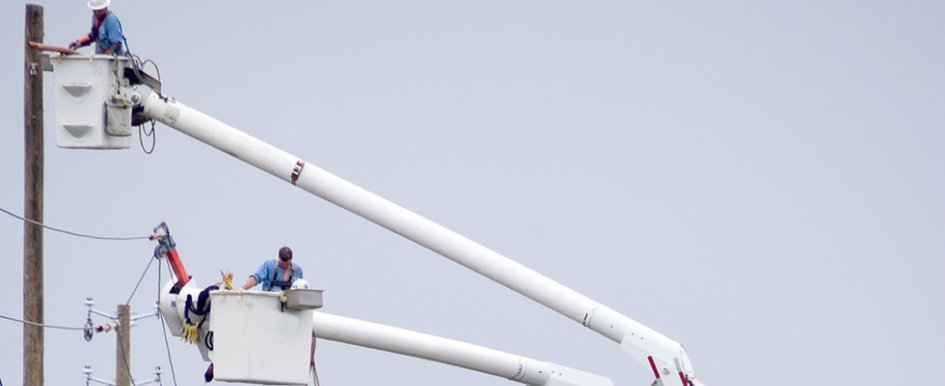
The “greening” of U.S. utilities is underway. Here, greening refers to the process of transforming practices to be more environmentally conscious. The U.S. has committed to reducing greenhouse gas pollution by 50% to 52% from 2005 levels, and with electric utility production accounting for 25% of those emissions, utilities are under pressure to turn to cleaner sources of energy. Electrifying fleets is just another step in their overall plan to reduce the carbon footprint of their operations.
Southern California Edison (SCE), the primary electricity utility for much of Southern California, was recently recognized by the Smart Electric Power Alliance (SEPA) for its progress in transforming to a carbon-free electricity sector and was named to the 2023 Utility Transformation Leaderboard.
SCE has already taken important steps to electrify a significant portion of its fleet, which contains more than 6,700 assets — approximately 5,000 vehicles, 1,000 trailers and 700 off-road assets.
Todd Carlson, SCE principal manager of fleet asset management, outlined the company’s ambitious goals. “SCE seeks to lean into electrification opportunities and must be aggressive to meet proposed California air quality and greenhouse gas reduction goals associated with the proposed California Advanced Clean Fleet rule,” says Carlson. “SCE plans to have 90% of our light-duty vehicles electrified by the end of 2025, and 100% by 2030. That same year, we also expect to exceed 30% of our medium-duty and 10% of our heavy-duty.” SCE’s electrification journey offers insights for your own fleet transformation.
Seek Assistance From Industry Groups
According to Carlson, SCE partnered with the other members of the Edison Electric Institute when developing initial public 2030 electric vehicle (EV) targets in 2020. “It was helpful to have an industry group assist in leading the initiative,” says Carlson. “Also, as a California fleet, we are active in commenting on proposals from our regulators who are attempting to address local air quality concerns.” Other resources on fleet electrification are available from the American Public Power Association and SEPA.
Create a Road Map
SCE used a telematics fleet assessment to outline vehicles targeted to be replaced by EVs, where they park and how long they have to charge. This was used to calculate the charger size required at each facility by year.
“We collaborated with our facilities team on a construction plan to install the infrastructure and chargers needed for the next five to 15 years at each site,” says Carlson. Each site has its own project plan.
Consider Time & Budget Constraints for EV Charging Infrastructure
Infrastructure lead times and budgets are particularly important considerations. “Construction is costly, and you may need to cut concrete or asphalt across a parking lot or add a new panel or switchgear,” says Carlson.
In addition, SCE had to contend with a small number of sites that were circuit constrained and required the utility to complete a circuit upgrade. Other conditions that required longer lead times include new to-the-meter service drops when switchgear is required.
EV infrastructure charging costs across 240 projects were recently published by ICF, a global advisory and technology services provider. This information can be useful in budgeting.
Tap Into Both Federal & State Incentives
Both federal and state incentives can help offset costs for electric vehicles and charging infrastructure. Refer to the U.S. Department of Energy website (energy.gov) for a list of incentives, laws and regulations, funding opportunities and other federal initiatives related to electric vehicles. SCE was able to tap into both sources for its electrification efforts.
Prepare a Business Case for EVs
Beyond meeting air quality and carbon emission goals, a strong business case can help utilities build consensus and commitment to change.
At SCE, the business case for electric pickups and electric power takeoff (ePTO) bucket trucks is supported by the high cost of gasoline and diesel fuel in California. Expect lower maintenance costs to be part of the value proposition for electric vehicles. “Our EVs that replaced gas vehicles have very favorable maintenance outcomes,” says Carlson. “And our traditional hybrid vehicles have also had good maintenance outcomes over the last 10 years.” SCE expects similar results for newly delivered EV tractors replacing diesel units.
Take Driver Opinions Into Account
Carlson recommends surveying your current drivers to assess if they are excited, neutral or opposed to replacing their fleet vehicle with an EV.
“Ask your drivers if they own an EV or if they have ever driven an EV for context as a starting point for organizational change management,” says Carlson. “The EVs often sell themselves because drivers like the quiet operation and reduced jobsite emissions.” According to Carlson, providing test or demo units to drivers often results in drivers asking, “When can I get one?”
Prepare for Expected Issues
According to Carlson, product availability is the biggest issue in the electrification of the fleet — and not just medium- and heavy-duty vehicles. “Even the exploding pickup truck space has been hit by availability and production constraints,” he says. Once SCE achieves full-scale adoption of EV work trucks, portable chargers and robust public charging for storm support and emergencies will be required. However, Carlson doesn’t see portable charging solutions as a current constraint for EV work truck adoption.
There’s a lot to consider when electrifying your fleet, but because fleets like SCE’s are sharing how they plan to reach their goals, electrification is becoming easier, not only for all utilities, but also for their commercial customers.
